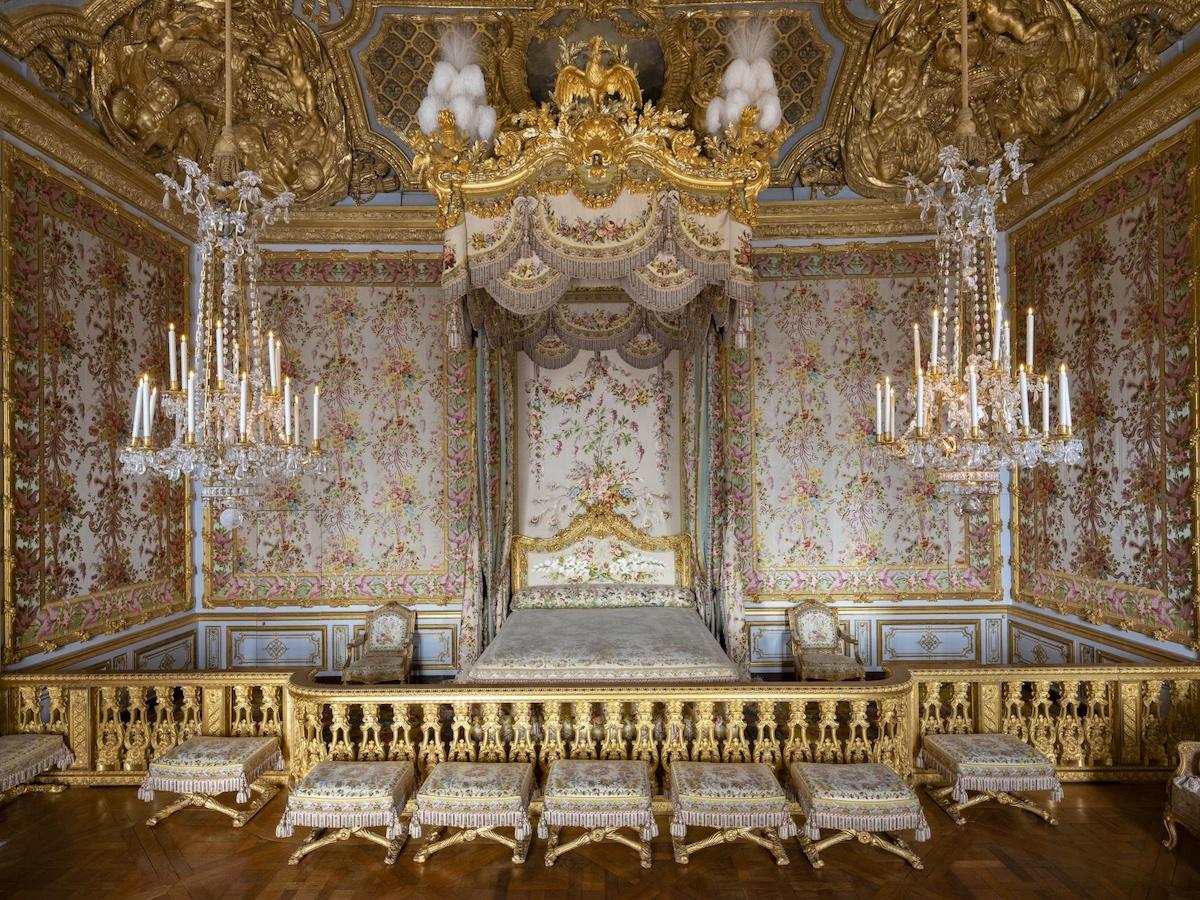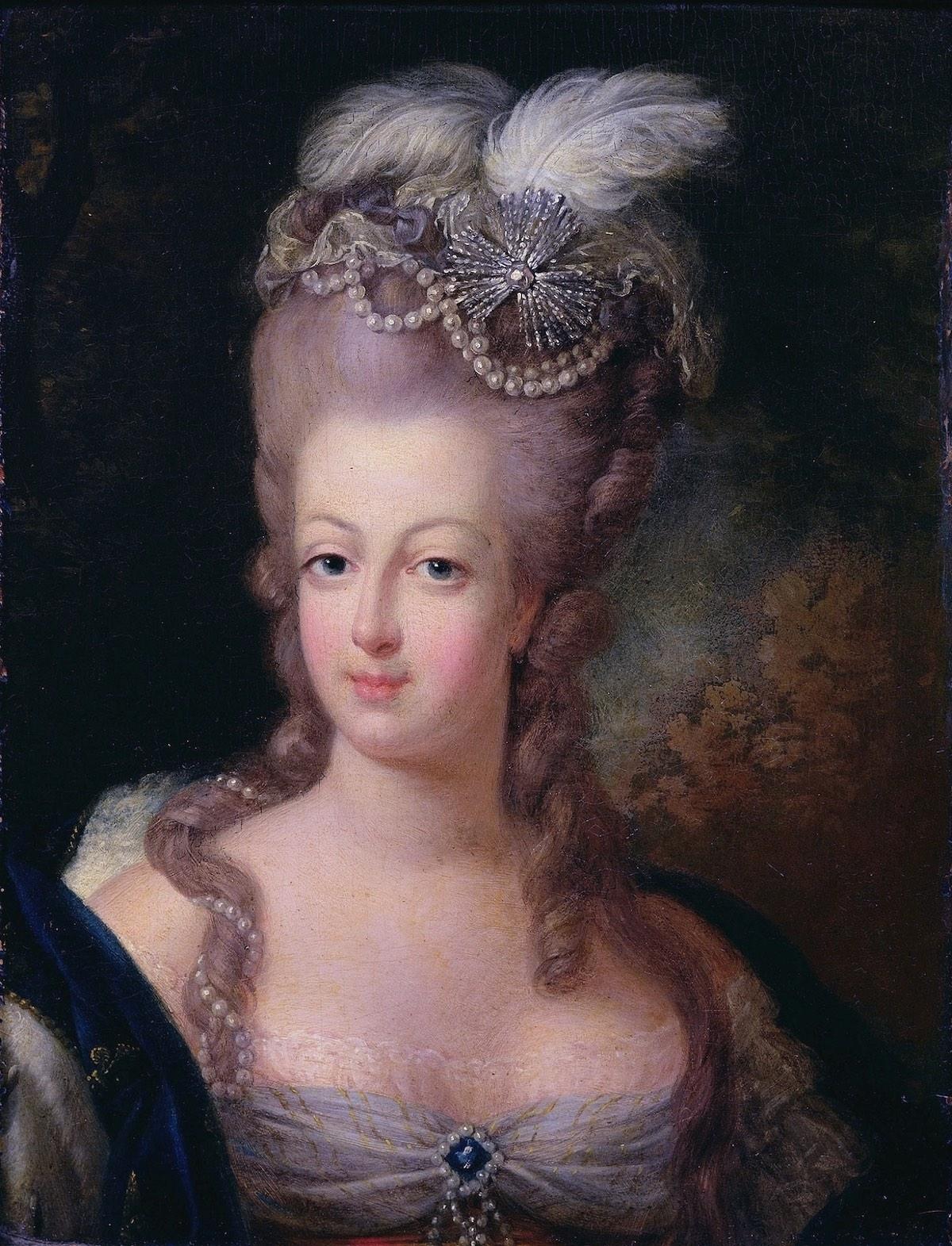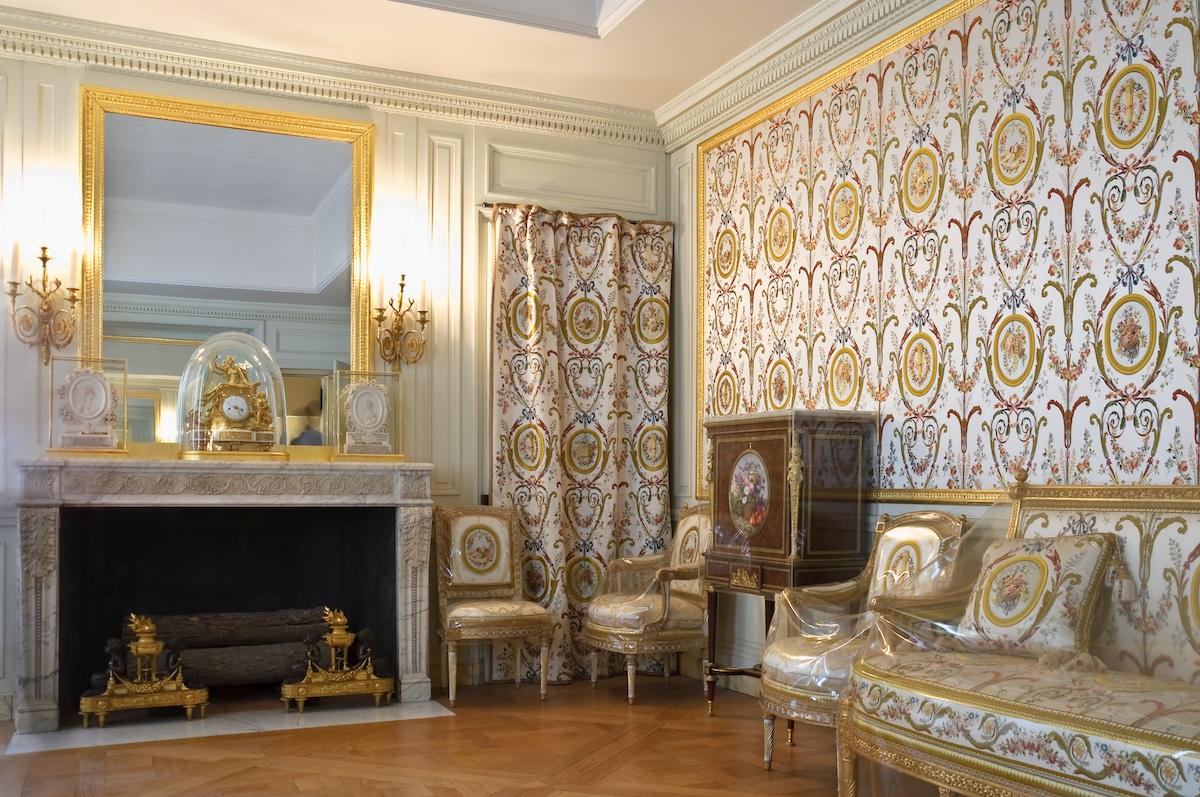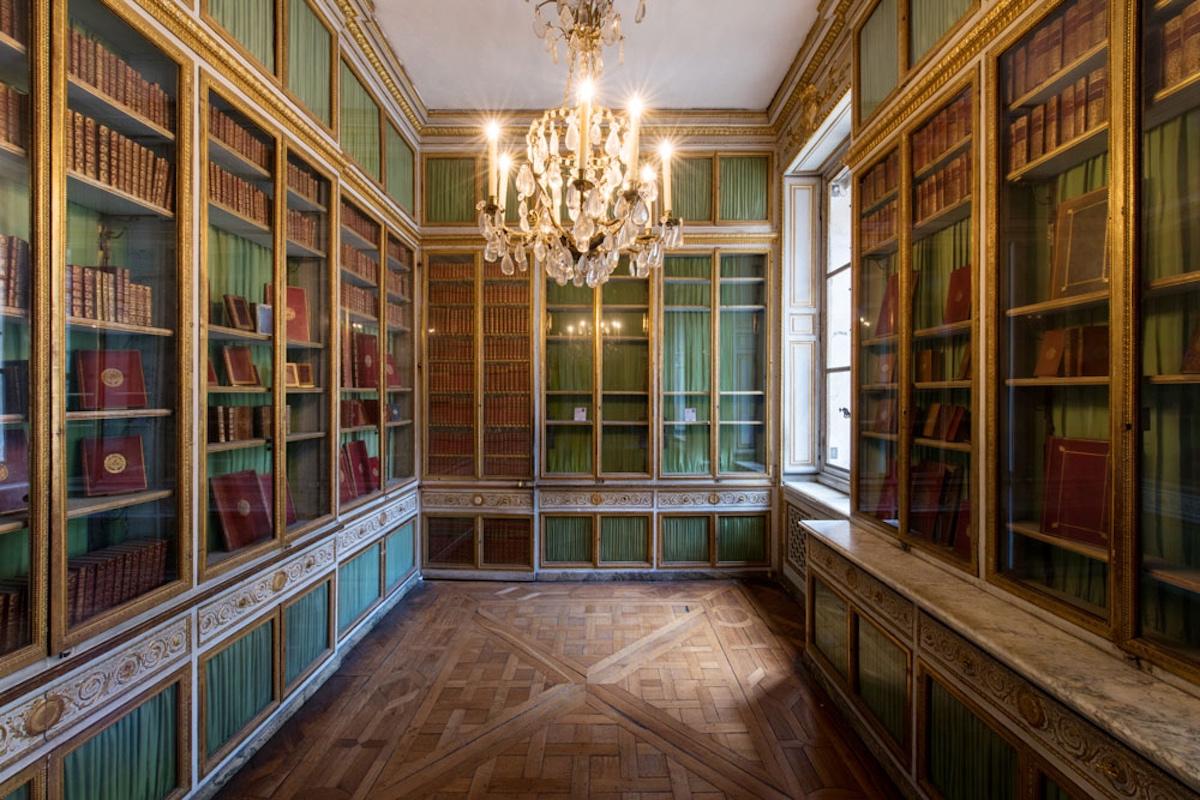It was in the secret chamber that Marie Antoinette spent most of her time outside of courtly life with her children and an intimate circle of friends. But just like what went on in these rooms, there was little historical evidence of how they were organized. Over the past several years, archivists for the Palace have worked to piece together how these rooms looked during her reign through their layout and documentation on the traditional fabrics that appeared in each chamber.
The newly accessible rooms are located through a secret passageway, opening up into the Méridienne, a chamber named after the activity that took place in it: it was where the queen often took her afternoon nap. The room is outfitted with a mirror clad alcove and wooden panelling decoration with motifs carved by the Rousseau brothers. The glazed doors that lead into the room are decorated with bronze work by Gouthiere, depicting an eagle, a peacock, garlands of roses, and bows and arrows. These figures were meant to be allegorical references to celebrate the birth of Marie Antoinette and Louis XVI’s first son.




























